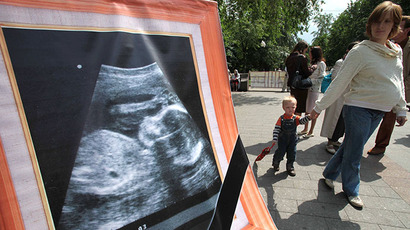Do it for Denmark! Low birthrate kicks campaign urging Danes to have more sex

A Danish travel company is calling for Danes to have more sex while they’re on holiday – to save the country. They even launched a competition to encourage the people to take a break and conceive kids, as the birthrate is now at its lowest in decades.
Spies Rejser Travel has promised three years of free baby supplies and a child friendly holiday for a couple who can prove that they conceived while on a Spies’ holiday. The travel company said it is trying to help tackle the country’s low birth rate by encouraging couples to do it for Denmark.
The birth rate in Denmark is currently the lowest it’s been in 27 years. Almost 58,000 children were born in 2012, but the present rate of 1.7 children per family is not enough to maintain the population.
Eva Lundgren, a spokeswoman for Spies, said that sexologists believe one of the reasons for the low birth rate is that Danes are too busy to have sex.
“Sex specialists believe that Danes are too busy with their daily life and they need to get away, so we hope we encourage people to take a break and have some romance,” she told RT.
The thinking behind the initiative is that a couple’s desire for each other increases while they are taking a break together.
Couples who enter the competition are sent a pregnancy test after the holiday and if it comes up positive, they must send in a picture of the test result to Spies as proof.
Entrants are given a list of romantic cities and the website then asks women to enter the date of their last period so they can take a trip when they are at their most fertile.
There are even useful tips for increasing fertility such as “take advantage of gravity. Lie down for at least 15 minutes after sex.” Men are also advised not to wear tight pants “even if you think it looks good.”
A report published in February described the birth rate among Danish women as “dangerously low” and found that one in five couples in Denmark are childless.
“Many wait too long to have children, creating a greater need for fertility treatments. There is a need to raise awareness, as the problem is approaching epidemic levels,” Soren Ziebe, a clinical supervisor at Rigshospitalet, wrote in the report.
The study noted that in the 1970s the average Danish woman was 24 years-old when she gave birth to her first child. Today the age is 29, but a greater number of women are waiting until they are over 35. As a result more and more couples are relying on fertility treatments to conceive.
But do it for Denmark isn’t just about increasing the birthrate and is also a bit of fun.
“What if you already did your duty? Or what if your chance of conceiving a child isn’t so high,” asks the advert, filming an old couple followed by two gay men.
“Well look at it this way. It’s not just about winning. All the fun is in the participation.”














